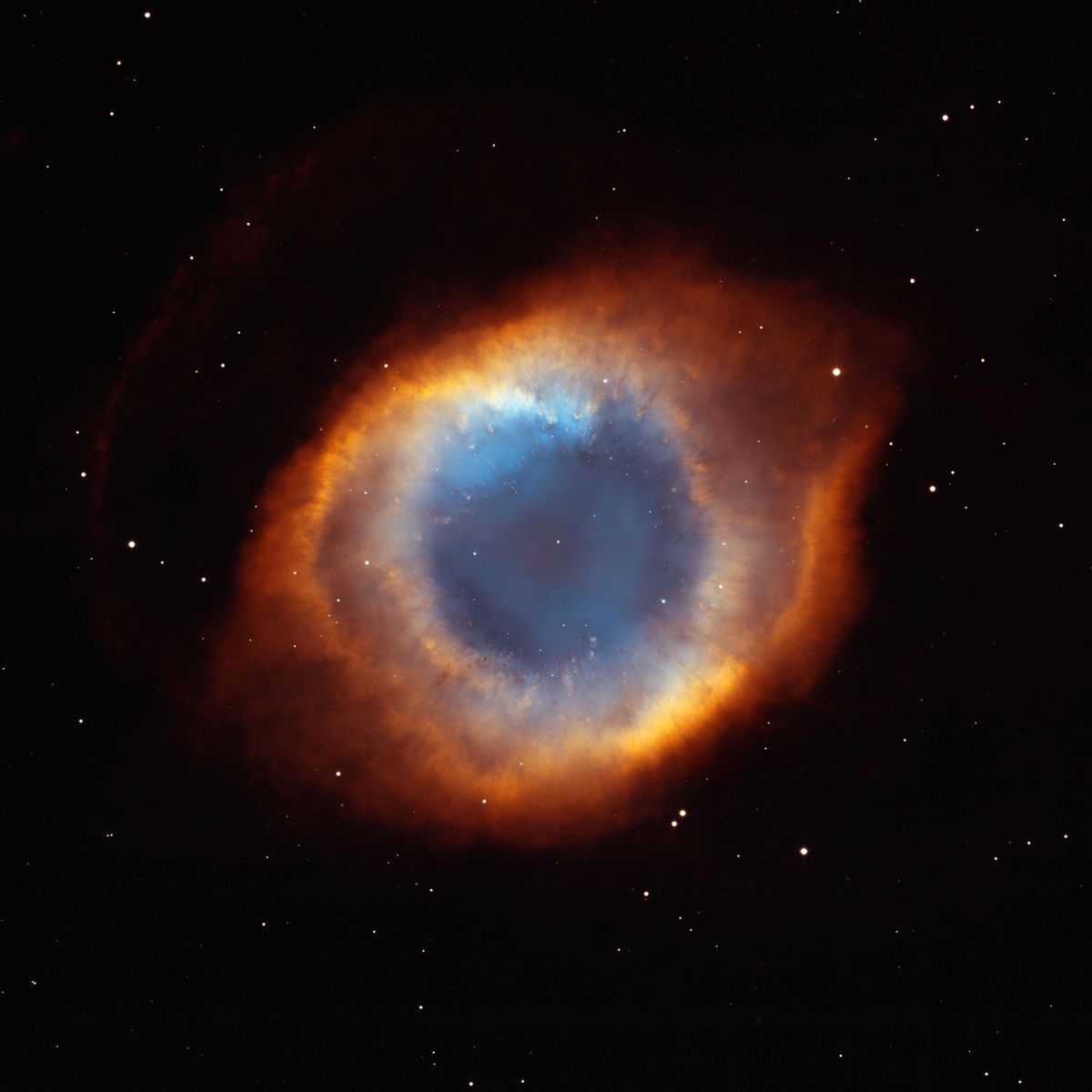This photograph of the coil-shaped Helix Nebula is one of the largest and most detailed celestial … [+]
SSPL via Getty Images
You exist on a rocky planet orbiting a yellow dwarf star of little importance that will get brighter, then expand, burning Earth to a crisp (in about 1-3 billion years), before exploding and spreading atoms—including yours—across the Milky Way.
A Hubble Space Telescope image released February 1, 2001 of the so-called “ant nebula” (Menzel 3, … [+]
Getty Images
The Sun fuses hydrogen atoms into helium atoms. This is nuclear fusion and it produces incredible energy. However, as its hydrogen reserves dwindle that process will speed-up, making the Sun shrink yet shine more brightly. Earth will be scolded and become bone-dry.
This NASA Hubble Space Telescope image shows one of the most complex planetary nebulae ever seen, … [+]
SSPL via Getty Images
In about 5.5 billion years the Sun will run out of hydrogen and begin expanding as it burns helium. It will swap from being a yellow giant to a red giant, expanding beyond the orbit of Mars and vaporizing Earth—including the atoms that make-up you.
This photo made by the Hubble Space Telescope shows the nebula IC 3568 in the constellation … [+]
NASA/AFP via Getty Images
The Sun as a red giant will then… go supernova? Actually, no—it doesn’t have enough mass to explode.
Instead, it will lose its outer layers and condense into a white dwarf star about the same size as our planet is now.
NGC 5189, a planetary nebula 1,800 light-years away in the southern constellation Musca, as seen by … [+]
getty
It’s that cloud of dust expelled by our dying Sun as a white dwarf visible around our Sun as a white dwarf that will be our legacy—a spectacular planetary nebula.
A planetary nebula is the glowing gas around a dying, Sun-like star.
The Stingray Nebula as photographed by the Hubble Space Telescope April 2, 1998 (Photo courtesy … [+]
Getty Images
It will glow with the ultraviolet light from the Sun as a white dwarf.
A planetary nebula is the final—and fairly brief—stage in the life of a medium-sized star like our Sun.
Butterfly shape emerges from Stellar Demise in Planetary Nebula NGC 6302. Photo taken by the Hubble … [+]
Universal Images Group via Getty Images
There is, however, a kicker.
When the Sun leaves behind a nebulae it will no longer be in the Milky Way.
In its first glimpse of the heavens following the successful December 1999 servicing mission, NASA’s … [+]
SSPL via Getty Images
A billion years before the Sun explodes, the Milky Way will have collided and merged with the Andromeda Galaxy—currently the closest major galaxy to us at 2.5 million light-years—to create a new, massive galaxy called (perhaps) “Milkdromeda.”
Wishing you clear skies and wide eyes.
This article is auto-generated by Algorithm Source: www.forbes.com


